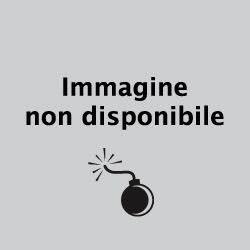

Exhibited during a 1957 Jewish Museum group show, this eyebrow-raising artwork ultimately caught Leo Castelli’s attention. Johns deliberately removed his model’s eyes to ensure audiences would be forced to confront the ambiguous relationship between Target’s painting and three-dimensional elements, asserting its objecthood proudly. Here, encaustic-dipped newspaper layered creating visceral visual effects, bound below four plastered renderings of a female’s lower face. In 1955, Jasper Johns produced Target With Four Faces, a crossover between a canvas and a sculpture. His objectives evolved throughout the following year. , 1958 by Robert Rauschenberg, printed 1981, via SFMOMA The American Artist’s Rise To Fame Jasper-Studio N.Y.C.

Johns intentionally eschewed set connotations to conjure binaries about “things which are seen and not looked at.” Depicting a motif ubiquitous throughout American consumerism, however, Flag nonetheless raised a semiotic conundrum: is it a flag, a painting, or both? Notwithstanding meta-philosophy, the painting’s meaning also varied amongst viewers, who interpreted anything from patriotism to oppression. As opposed to an opaque concept, Johns approached his subject as a singular object, not only a symbol. He created his legendary Flag (1954) the next day, constructed using an ancient encaustic method of dripping hot beeswax, tree sap, and pigment on canvas. Jasper Johns absorbed these fresh surroundings, beginning his artistic journey in 1954 after he had dreamt of a colossal American flag. Neo-Dadaism, a style merging high art with everyday life, also spread like wildfire amongst New York’s most impressionable minds. Pearl Street transformed into an epicenter of creativity thanks to its new residents. Please check your inbox to activate your subscription Thank you! That reinforced a kind of forward movement.” Johns soon converted his fear into determination. “They were more experienced and strongly motivated to do what they were doing,” he later remarked in a NY Times interview. In fact, after meeting peers John Cage and Merce Cunningham, Johns felt even more intimidated by the tenacious trio. Through Rauschenberg, Johns also experienced an unofficial introduction into the contemporary art world, to which he felt comparatively immature. Within a year, they rented studios in the same Manhattan building on Pearl Street, friendly neighbors to emerging performance artist Rachel Rosenthal. The artist invited Johns to help him decorate store displays for Bonwit Teller and the two quickly fell in love.

There, he also met a fellow force-of-nature nearly five years his senior, Robert Rauschenberg. When Jasper Johns and Robert Rauschenberg Fell In Love Robert Rauschenberg and Jasper Johns In John’s Peart Street Studio by Rachel Rosenthal, 1954, via MoMA, New Yorkīy 1954, Jasper Johns worked full-time at Marboro Books, a discount chain store selling overstocked editions. Little did he know his entire life would change when he returned to New York.

Susceptible to being drafted into the Korean War, he left for Sendai, Japan in 1951, where Johns stayed stationed until his 1953 honorable discharge. Parsons School of Design proved an educational mismatch for the misguided Johns, however, causing him to drop out within a semester. While attending The University Of South Carolina, his teachers recommended he move to New York to pursue art, which he did per their instruction in 1948. From then on, Johns knew he wanted to be an artist, not quite anticipating what this career choice entailed. He spent his childhood with his paternal grandparents in South Carolina, where he took interest in portraiture displayed throughout the house. Born in Georgia in 1930, his parents divorced after his birth, bouncing him from one relative to another. Jasper Johns experienced a turbulent upbringing. Jasper Johns’s Early Years Jasper Johns and His Target by Ben Martin, 1959, via Getty Images


 0 kommentar(er)
0 kommentar(er)
